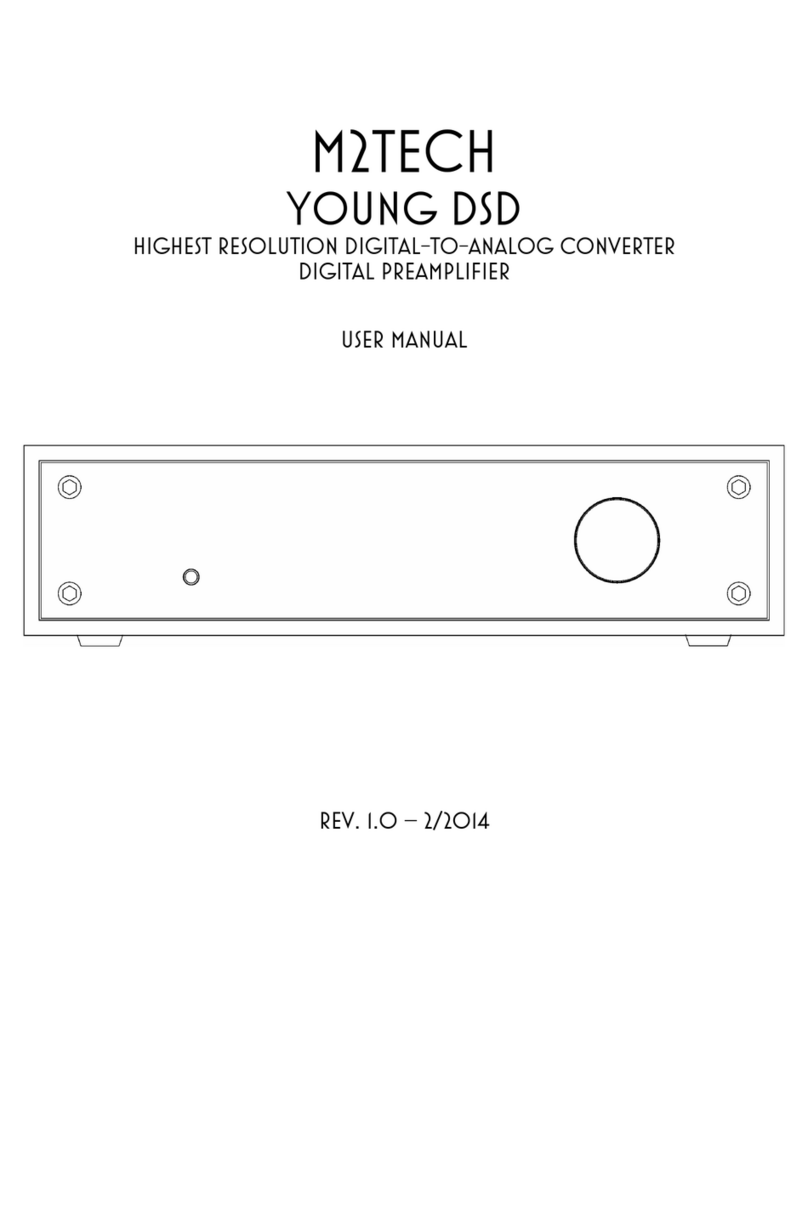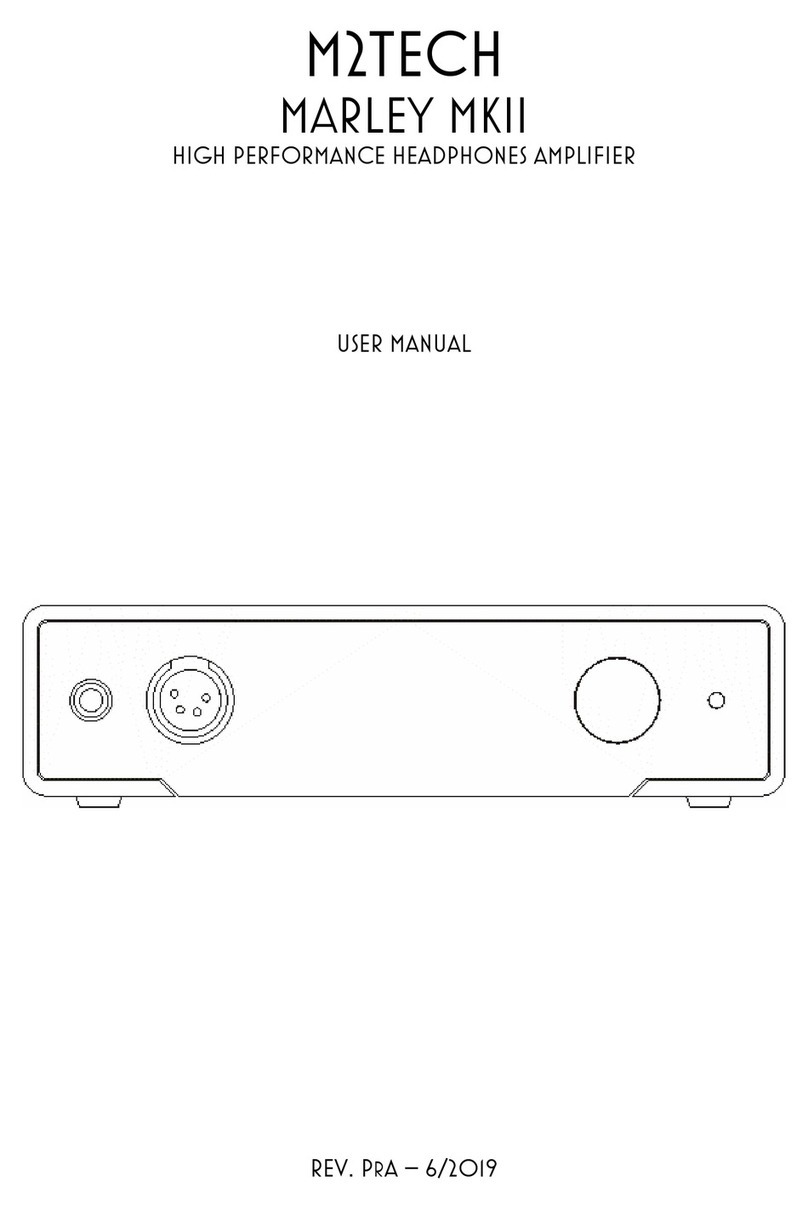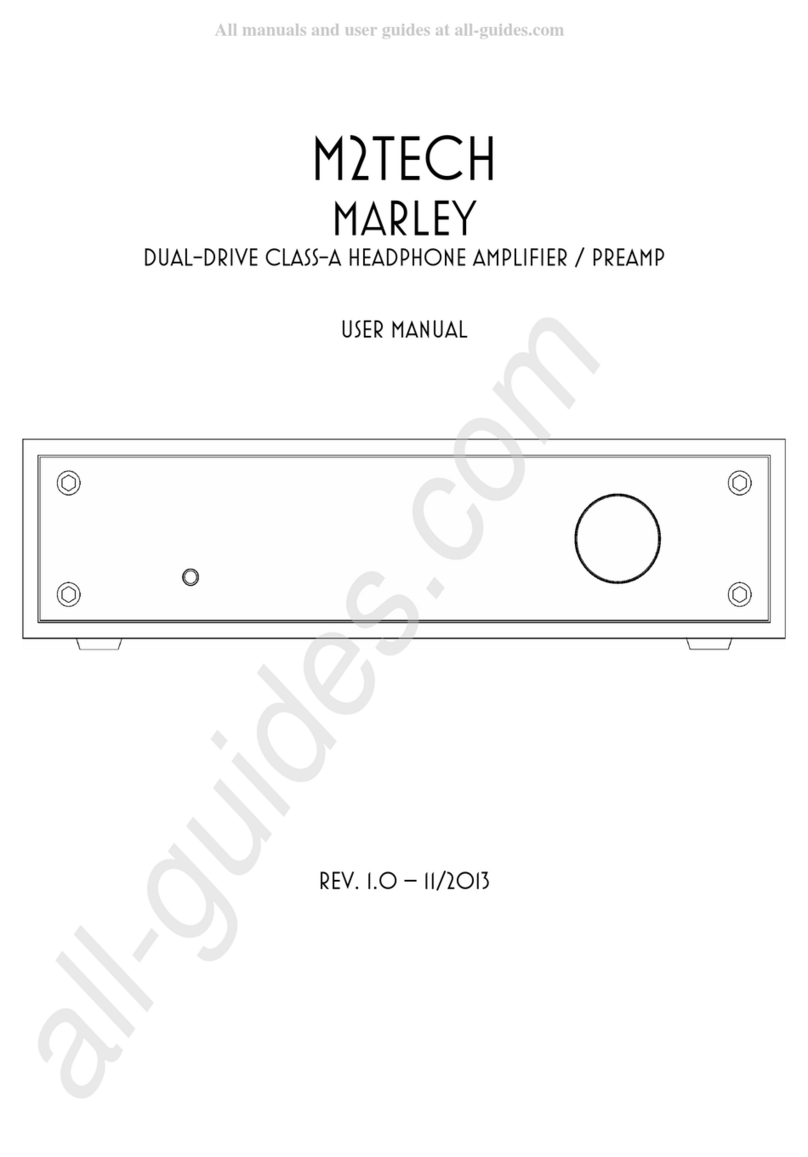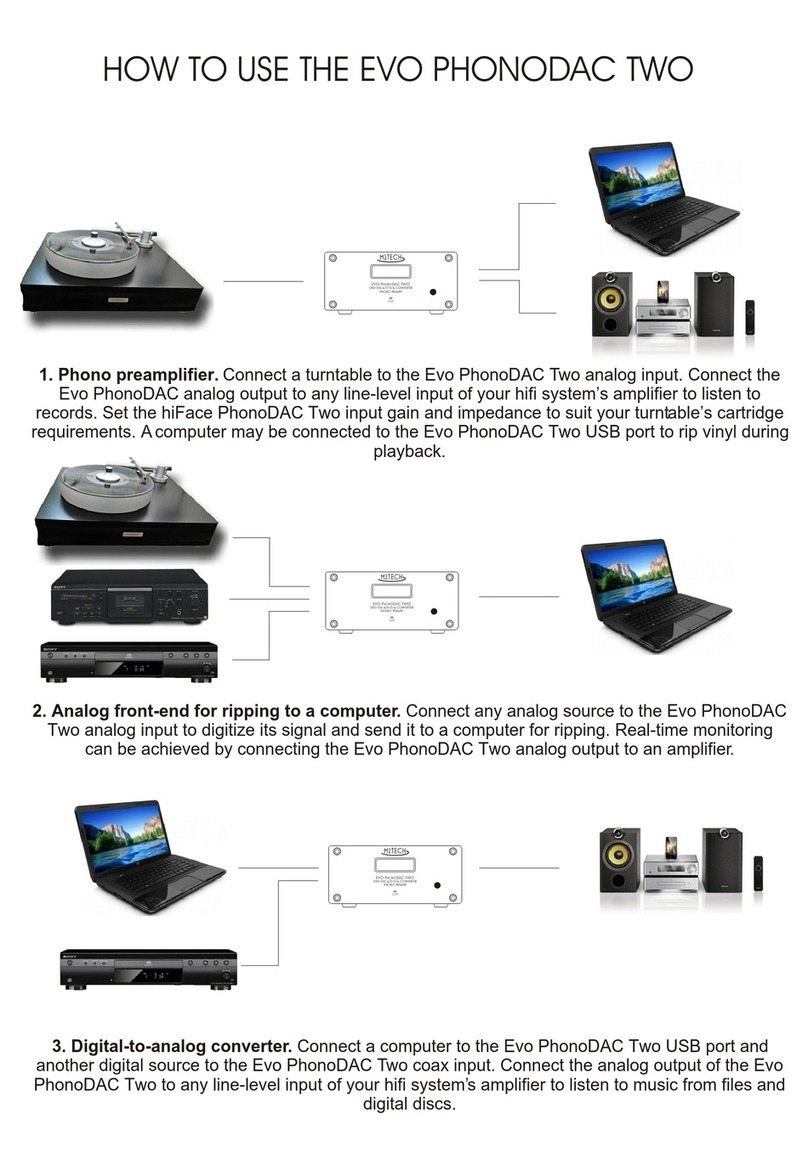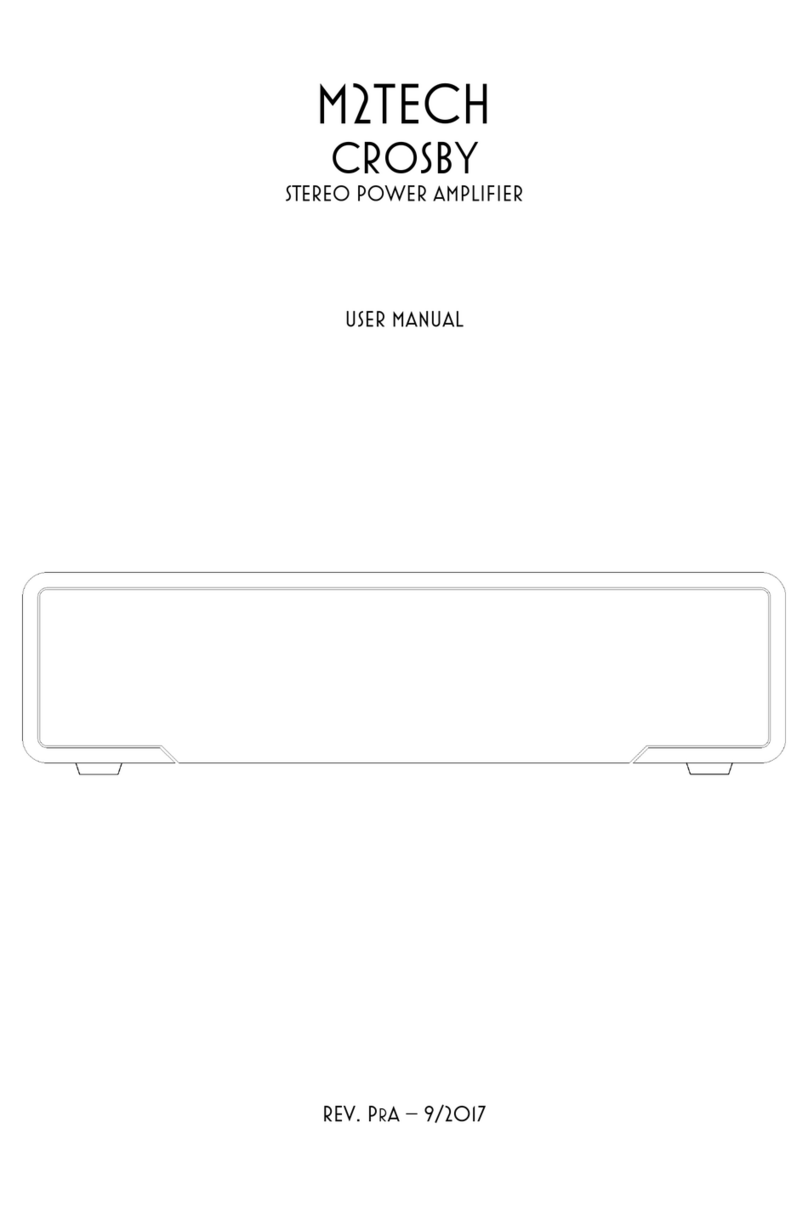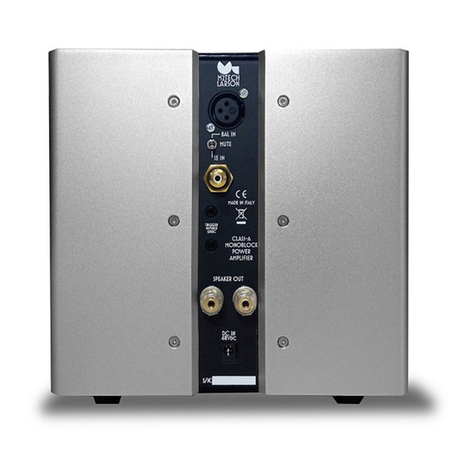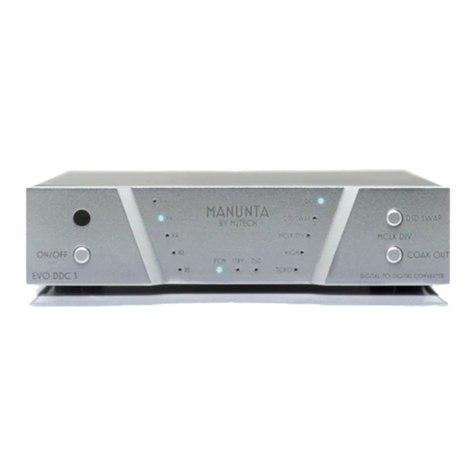www.m2tech.biz
TABLE OF CONTENTS
1. Unpacking and Placing the Unit.......................................................................................7
2. Front Panel ......................................................................................................................9
3. Back Panel.....................................................................................................................11
4. Remote Control..............................................................................................................13
5. Connecting and Powering the Unit.................................................................................15
6. Cleaning the Unit ...........................................................................................................17
7. Using the Young MkIII....................................................................................................19
7.1. Volume Setting........................................................................................................19
7.2. Mute Toggle ............................................................................................................19
7.3. Choosing the Signal’s Phase...................................................................................20
7.4. Source Selection .....................................................................................................20
7.5. Menu Navigation .....................................................................................................20
7.5.1. BALANCE: Balance Setting..............................................................................21
7.5.2. DISPLAY BACKLIGHT: Setting the Display Backlight ......................................21
7.5.3. PCM FILTER: Choosing the PCM Filter ...........................................................22
7.5.4. DSD FILTER: Choosing the DSD Filter ............................................................22
7.5.5. OUTPUT LEVEL: Choosing the Maximum Output Level ..................................23
7.5.6. VOLUME STEPS: Choosing Volume Steps......................................................23
7.5.7. VOLUME MODE: Choosing Volume Mode.......................................................24
7.5.8. POWER ON VOLUME: Choosing the Volume Set at Power-on .......................24
7.5.9. AUTO OFF: Setting the Automatic Switch-off...................................................25
7.5.10. STANDBY LED: Setting the Front Panel LED behaviour................................25
7.5.11. AUTO ON: Setting the YOUNG MKIII Behaviour when power is applied .......25
7.5.12. REMOTE ON/OFF: Setting the YOUNG MKIII to Accept/Ignore the IR Remote
ON/OFF command .....................................................................................................26
7.5.13. BLUETOOTH®: Enabling/Disabling the Bluetooth®Receiver..........................26
7.5.14. BT®PAIRING: Enabling Bluetooth®Pairing....................................................27
7.5.15. BT®INFO: Accessing Bluetooth®Interface Information..................................27
7.5.16. FIRMWARE REVISION: Accessing Firmware Revision Information ..............28
7.5.17. DEFAULT SETTINGS: Restoring Factory Settings ........................................28
7.6. Connecting a Bluetooth®source..............................................................................28
7.7. Power Mode and Standby.......................................................................................29
8. Using a Computer as Digital Source..............................................................................31
8.1. Plug’n’Play Operation with Apple OSx ....................................................................31
8.1.1. DSD files playback with OSx ............................................................................31
8.2. Plug’n’Play Operation with Linux.............................................................................31
8.2.1. DSD files playback with Linux...........................................................................32
8.3. Using the Young MkIII with Windows ......................................................................32
9. Controlling the Computer Player by Using the Young MkIII Remote Control .................33
10. Updating Young MkIII Firmware...................................................................................35
11. Controlling the Young MkIII by the Bluetooth®Interface ..............................................37
12. Specifications...............................................................................................................39
